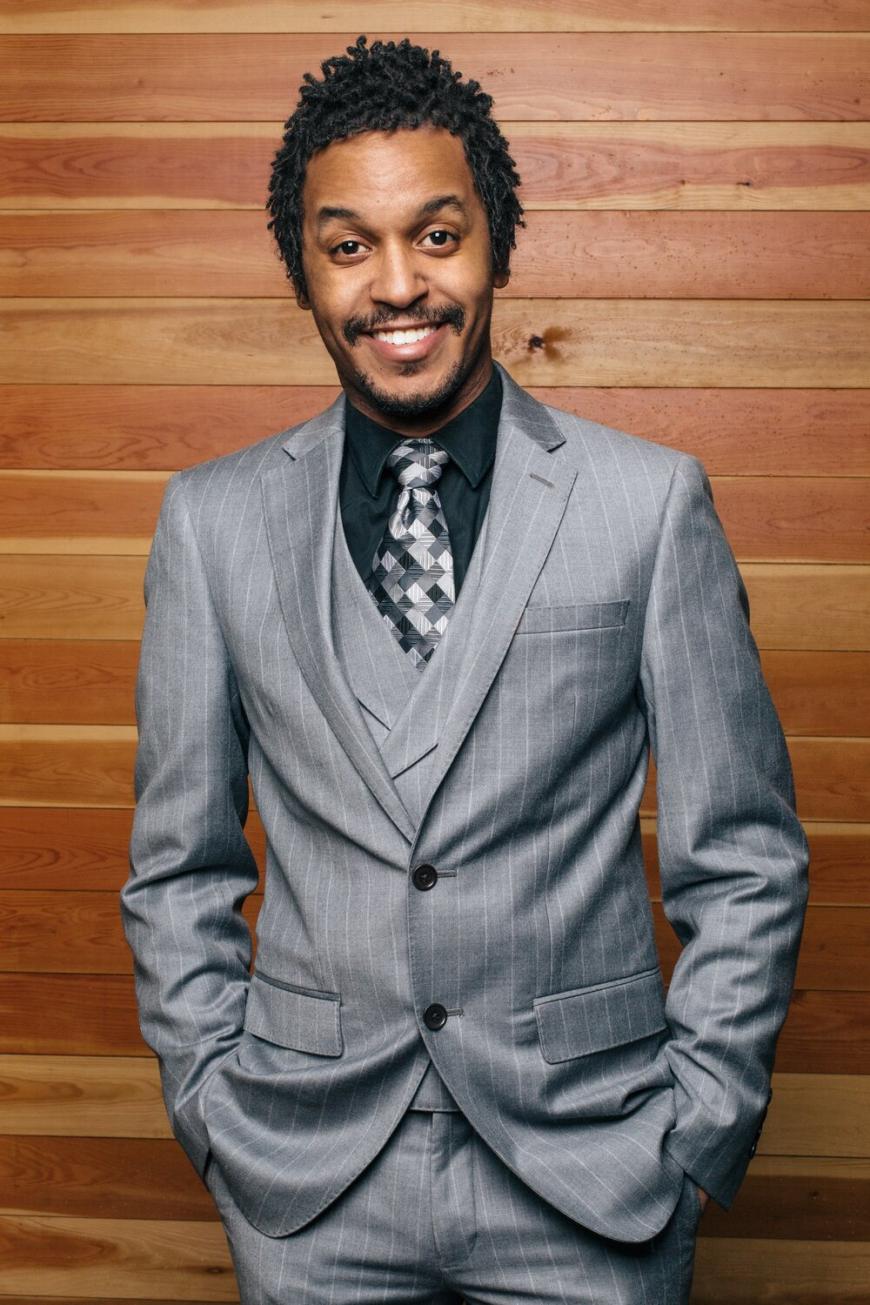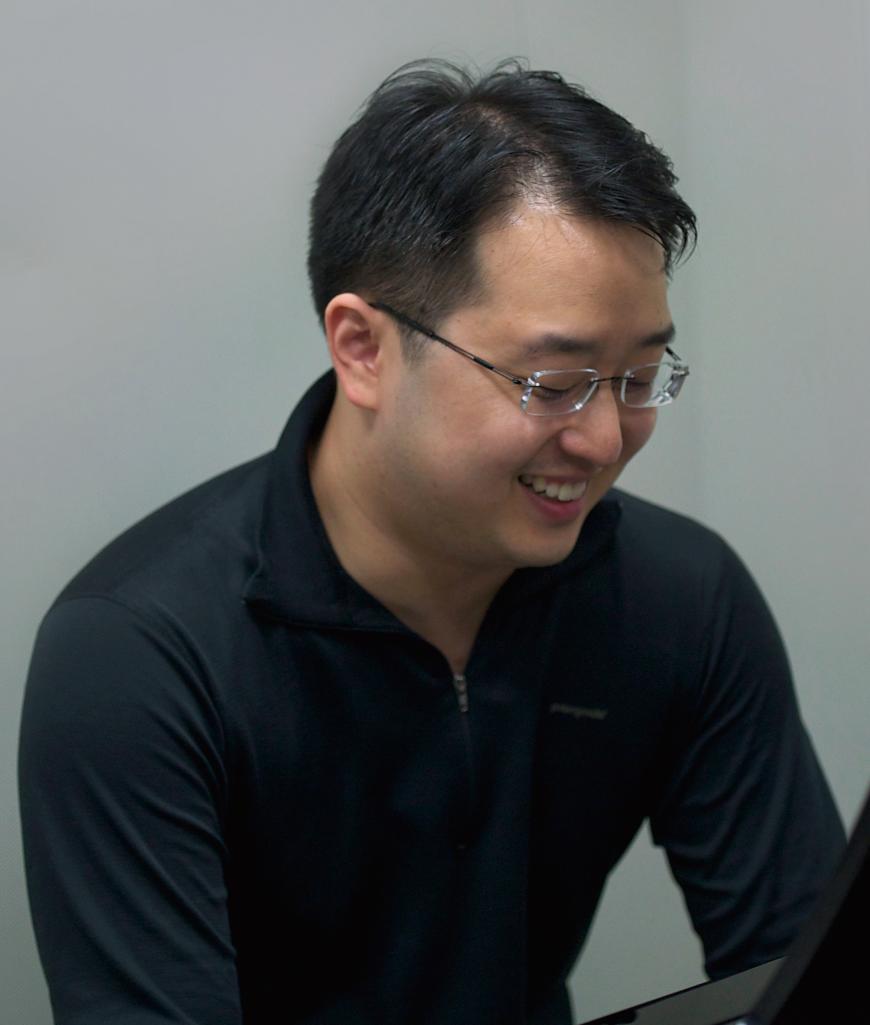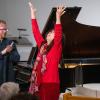
Gone are the days in which contemporary classical composers could be grouped into geographic schools. Social media and the internet have reduced the need for artists to be in physical proximity to each other in order to create work with similar stylistic tendencies or ideological underpinnings. How, then, might one construct a location-based survey of composers working in the same urban area?
This is the project of the Hear Now Music Festival, which presents the music of composers “living and working in Los Angeles” each year. Considering scores anonymously, the festival rejects the idea that a city’s compositional output is defined by a homogenous character or even by its most prominent or established voices. Instead, Hear Now’s founder and director, Hugh Levick, has a different priority — finding music that is “sincere, exploratory … and not calculative,” as he expressed in a post-intermission interlude during the third chamber concert of this year’s festival.
The five composers featured on April 27 at Frankie Los Angeles shared little in musical terms. But the selections on the program did show that spirit of curiosity and reflection, making for an engaging and approachable evening.

Two of the featured works used physical phenomena as the impetus for musical exploration. Corey Dundee’s Triboluminescence found inspiration in its titular phenomenon, “light emission resulting from the mechanical force applied to a substance.” While these moments of ignition were generally represented by snapping or angular attacks, Dundee modulated these sparks greatly across a roving, rhapsodic work for large ensemble.
In the opening, a combination of high-register harp, bass, and woodblock struck a glottal balance. As the piece developed, brass interjections provided a warm boisterousness. Glockenspiel accompaniment brought jubilance to a section that asked various ensemble members to whistle. And a maniacal cymbal groove spurred on the strings’ motivic quarreling as the piece reached its apex.
J.M. Gerraughty’s Fougère, an examination of perfumery for violin, bass clarinet, percussion, and piano, followed a more direct tripartite structure. In each section, Gerraughty’s focus on successively lower registers mirrored the top, middle, and base notes of layered fragrances (a resonant musical analogy, as the composer noted from stage).
The musicians of the International Contemporary Ensemble (ICE) gave a committed reading of Gerraughty’s work. The players approached the opening portion’s scampering modal runs with a conversational lightness that evoked Francis Poulenc. Violinist Yezu Woo and clarinetist Emmalie Tello’s sounds, at once impassioned and inward, imbued the middle section’s lyrical writing with a muted strain. The final section, built on low marimba tremolos and piano arpeggios, seemed to produce shadowy extramusical resonance.
The effect recalled the program’s opening work, Andrew Moses’s Nobject-Catoptriarch-Umbration. The piece focused on ghostly tones, which emerged spontaneously from the production of carefully chosen intervals in just intonation. Moses approached the analog instrumentation (clarinet, string quartet, and piano) with a theorist and technologist’s precision. (He holds an MFA in art and technology from California Institute of the Arts as well as a bachelor’s in composition from the Curtis Institute of Music.)
The work concerns itself minimally with development in order to prioritize a deep engagement with its sonic language. In performance, the effect is powerful — arresting enough to obscure the piece’s highly intellectual construction. The emergent “shadow tones” were not loud sounds but ones with an intense physical presence, seeming to take up the resonant space in one’s head as they vibrated energetically — a potent manifestation of the work’s meditation on shadow, mirrored, and unseen presences.

Michael M. Lee’s Danse Macabre, by contrast, examined concrete personal themes. The two movements here, which comprise the second section of his string trio, focused on his experience with disability after a falling accident in 2021.
Violinist Josh Modney, violist Wendy Richman, and cellist Ashley Walters found satisfying gravity in Lee’s hyper-romantic idiom, which took on a scratch-toned edge in moments of fervor. The ensemble’s cultured sense of articulation drove the interpretation’s impact across stretches of conversational close-register playing as well as fits of rhythmic drive.
That energy set the tone for the wider ensemble’s approach to Jeffrey Holmes’s Hagall, a strident depiction of Norse winter that closed the program. Guided by conductor George Lewis’s controlled sense of gesture, ICE’s sound appeared delightfully unrestrained despite a careful attention to balance.
Behind the work’s satisfying bombast, which featured the ensemble’s dual percussionists prominently, delicate touches of orchestration stuck out, gracefully modulating the piece’s intensity. Dense polyrhythms, voiced with striking clarity, subtly grounded the first movement’s galloping drive. In the second, melting interludes from the winds and propulsive tremolo from the bass bounded the string trio’s rising action. And in the finale, muted triangles provided a biting undercurrent that drove the ensemble toward the piece’s conclusion.
It was a fitting end to an energizing evening. “Schools” may be a thing of the past, but composition in Los Angeles is alive and well.




